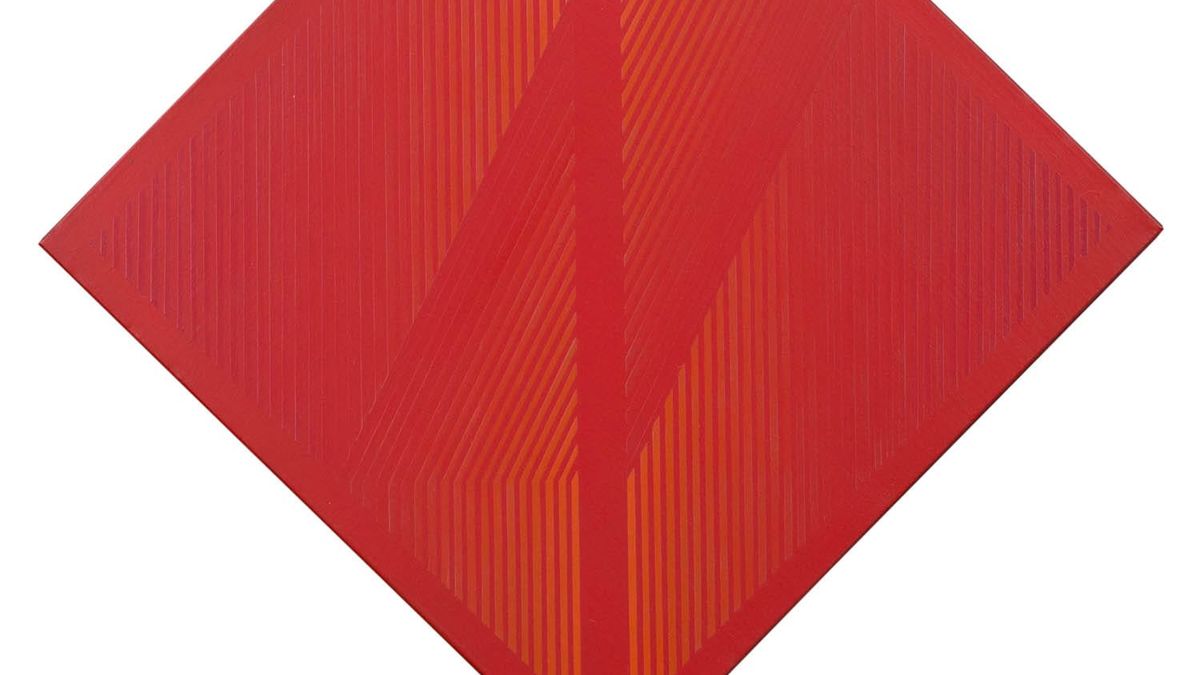For those interested in the historical aspects of our art is exhibited at Alejandro Faggioni Art Studio, the exhibition “Planimetries” which includes the cream of the non-representative art that emerged in Argentina since the mid-40s. Concrete Art- Invention, those that followed the postulates of the Bauhaus, the constructivists, those of pure visuality and chromaticism, the coplanar, Perceptism, optical approaches, kineticism.
Thus we arrive at 1955 when the New Art Association which would later give rise to informalism with a less rigid brushstroke and that many artists moved on to other movements such as the Inventionist, the Madí, a time of manifestos in which plastic artists, architects, designers, musicians involved in the creation of new languages, in magazines like Arthur (1944) founded by Tomas Maldonado; his wife, Lidy Prati and an editorial committee made up of Arden Quin, Rhod Rothfuss, Gyula Kosice, Edgar Bayley that only had one number; Invention 2 (1945), directed by Edgar Bayley who also directed Guidance Magazine (1946).
They constituted almost dictatorial proposals, for example: “The artistic era of representative fiction is coming to an end. Man becomes more and more insensitive to illusory images. Thus the prehistory of the human spirit is closed. The metaphysics of the Beautiful is dead. “Scientific aesthetics will replace the ancient speculative and idealistic aesthetics.”.
He Perceptist Manifestosigned by Raúl Loza, is among other postulates, “against the snobs who congregate like parasites around a paranoid, intimate and lounge atmosphere.” “Painting, like all art, must obey a structure.” “Perceptism manifests itself as the highest and most advanced stage of painting.”.
In 1951, Tomas Maldonadoa great theorist of concrete art, comments on what he said Theo van Doesburg: “The artist’s workshop will be like a bell jar. The painter must be white, that is, without drama and without stain. The palette should be made of glass, the brush square and hard, as pure as an operating instrument.. Theo van Doesburg introduced the term concrete in a 1930 manifesto “We talk about concrete and not abstract painting because nothing is more concrete, more real than a line, a color, a surface. A plane is a plane, a line is a line; nothing more, nothing less”. It should also be remembered Max Bill who organized a tribute exhibition to concrete art in Basel.
In 1953, Alfredo Hlitopresent in this exhibition and one of those who followed the postulates of Concrete Art -Invention, Although he did not belong to the initial nucleus, he demonstrated a more humanistic spirit by pointing out that “Its purpose is not to say what to look for in a specific painting or sculpture. The alternative is not so brutal if one considers that intimately linked sensitive and conceptual elements intervene in every work of art and cannot be reduced to just one of its elements..
In The Republic, Plato pointed out that “geometry is the knowledge of the eternally existing”. Hence, with all its derivatives, contemporary innovations, there are artists who have globally adopted this discipline that involves squares, rectangles, circles, triangles, vanishing lines, sinuous, infinitely, chromaticism gives it a dramatic intensity, interacting, sometimes, obsessively, in an unfathomable present.
The 26 artists are: Cresta, Del Prete, Espinosa, Alvarez, Arden Quin, Blaszko, Boto, Brizzi, Caraduje, Gerstein, Hlito, Jonquieres, Lozza, Mac Entyre, Martorell, Melé, Ocampo, Paparella, Prati, Pettoruti, Puente, Serón, Silva, Vardanega , Vidal and Yente, a group that cannot be missed even by the artists who continue with this non-objective representation that gave rise to the construction of a language that is the basis of all contemporary art, as stated by Laura Batkis, author of the accompanying text the sample. (Sergeant Cabral 881 5th floor “K”).
Source: Ambito
I am an author and journalist who has worked in the entertainment industry for over a decade. I currently work as a news editor at a major news website, and my focus is on covering the latest trends in entertainment. I also write occasional pieces for other outlets, and have authored two books about the entertainment industry.




